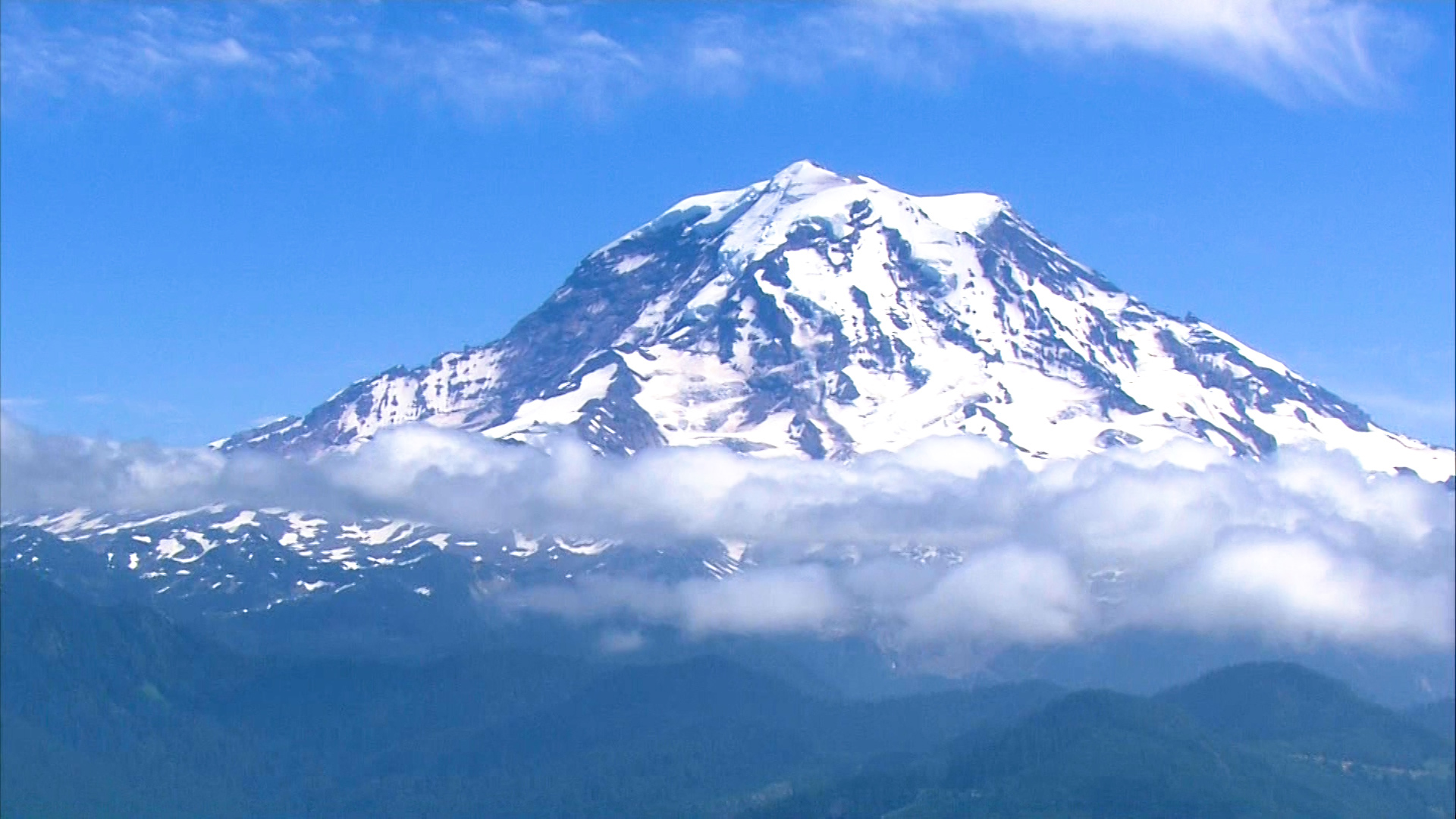LONGMIRE, Wash. — As the number of visitors to Mount Rainier has grown, so has the impact on the national park.
The park has seen an approximate 40% increase in visitation over the past decade, leading to long lines at park entrances and damage to the natural environment.
“We see folks lined up sometimes for miles, sometimes folks are waiting for hours," Park Ranger Terry Wildy told KING 5 on May 23. "And we know that visitors would much rather be enjoying the park instead of sitting in their car waiting to come into the park.”
On busy days, it's "fairly common" for visitors to sit in idling cars at entrance stations for a few hours, according to Wildy.
The impacts of overcrowding don't stop at the gates. Once inside, visitors tend to lap around the more popular parking lots, hoping to find an empty parking space. Vehicles will also park on road shoulders, damaging adjacent forest and meadow habitats, according to Wildy.
The impacts of overcrowding continue on the trail. When there is a high number of visitors arriving at the same time, it often results in crowded trails. Hikers tend to step off trails to pass, or let others pass, which results in damage to the environment, according to Wildy.
Overcrowding and the damage it can cause to Mount Rainier National Park is why the National Park Service implemented a timed entry pilot program for the Paradise and Sunrise corridors. Timed entry is in effect for the Paradise Corridor May 24 through Sept. 2 and in effect for Sunrise July 4 through Sept. 2.
“So this timed entry pilot is a way to spread out the visitation and ensure that everybody has a quality experience,” Wildy said.
Visitation to Mount Rainier National Park
The first road was built in the park in 1904. That year, 563 people were recorded to have visited for recreational purposes.
Two years later, that number surpassed 1,500 recreational visits.
Fast-forward to 1970 when 1,925,100 visits were recorded - the most in the park's history.
With a few exceptions, visitation to the park since 1970 dropped. In 1982, it was just over 1 million. Visitor numbers rebounded to 1,522,057 in 1992 but remained generally lower after. Between 2007 and 2012, visitor numbers hovered around just over 1 million to 1.2 million.
Then things began to pick up, with visitation growing each year, with the exception of 2020.
Between 2021-2023, approximately there have been approximately 1.6 million visitors to the park each year.
That rebound of visitors to Mount Rainier National Park is why the National Park Service said it's time to try timed entry.
"In some parks, the level of demand is exceeding the capacity for which infrastructure was designed or is outpacing the National Park Service’s ability to sustainably support visitation," a statement from the Park Service to KING 5 reads. "This trend is resulting in the need to explore new strategies to protect natural and cultural resources and provide opportunities for safe and meaningful visitor experiences. Crowded destinations, congested trails and roadways, full parking lots, and long lines prevent visitors from experiencing and enjoying national parks to their fullest."
Mount Rainier National Park is the only park run by the National Park Service currently considering timed entry. During the pilot program, the Park Service will evaluate vehicle and visitor use patterns, including monitoring trail and parking lot congestion, to determine its effectiveness.
“There will be a learning curve associated with it," Wildy told KING 5. "This is a pilot and we're trying to help get the message about what to do so folks don’t get frustrated when they are trying to visit the park.”
Watch KING 5's environmental coverage on YouTube

